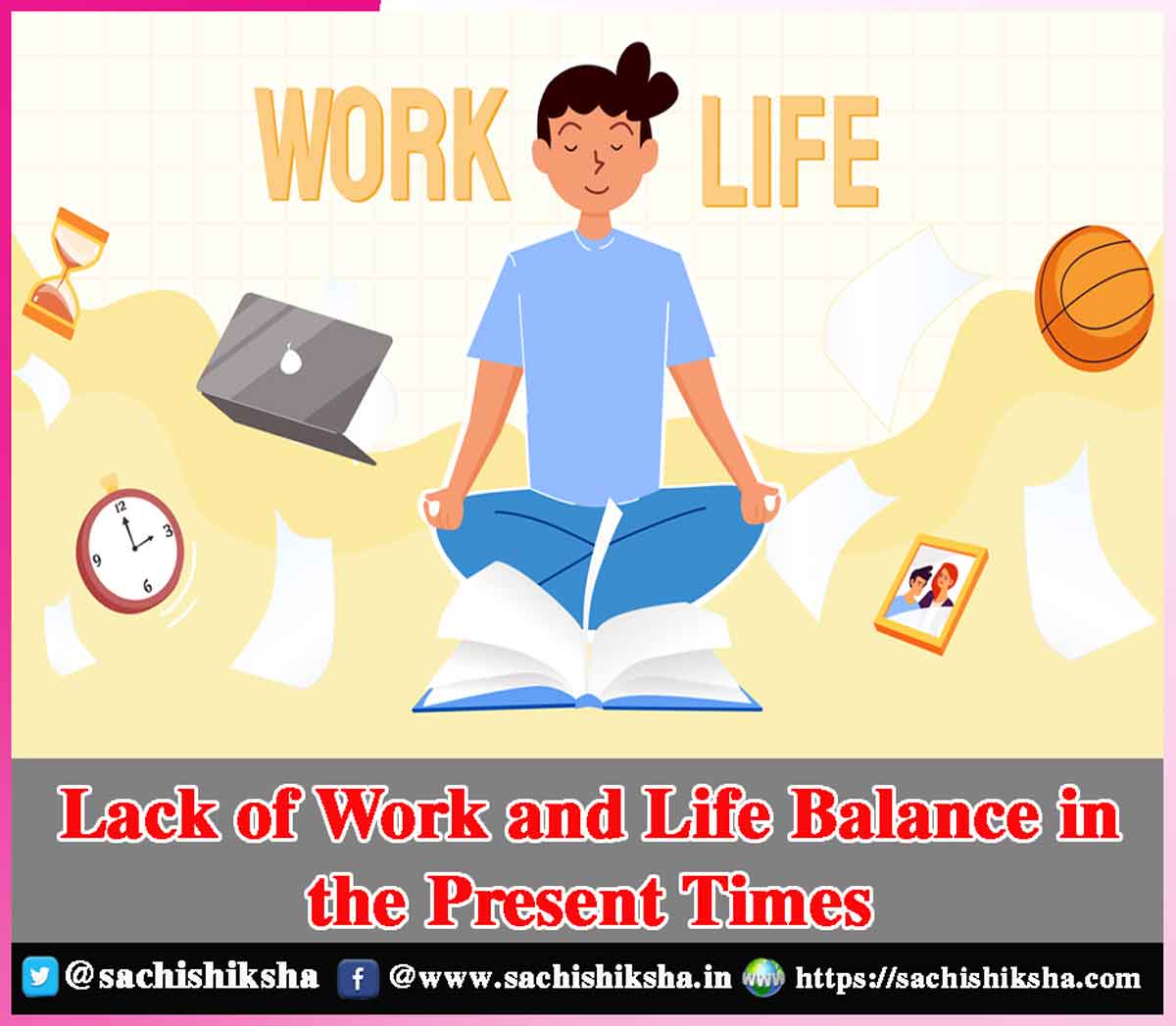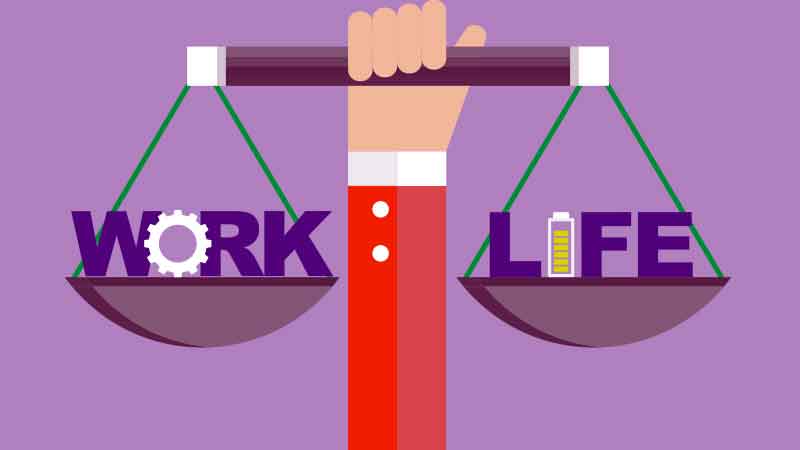Lack of Work and Life Balance in the Present Times
Introduction: In the contemporary era, achieving a work-life balance has become increasingly challenging due to numerous societal, economic, and technological changes. The phenomenon of an imbalanced work-life equation is characterized by the difficulty of managing professional responsibilities alongside personal life, leading to significant consequences on physical health, mental well-being, and overall quality of life.
Table of Contents
Contributing Factors
- Technological Advancements: The advent of digital technology has blurred the lines between work and personal life. Smartphones, laptops, and ubiquitous internet access mean that employees are often expected to be available around the clock. This constant connectivity can lead to extended working hours and intrusion into personal time, making it difficult to disconnect and unwind.
- Economic Pressures: The global economy’s volatility has heightened job insecurity, compelling many to work longer hours to demonstrate dedication and safeguard their positions. Additionally, the rise of the gig economy has led to more people working multiple jobs or irregular hours to make ends meet, further disrupting their ability to maintain a balanced lifestyle.
- Corporate Culture: Many organizations cultivate a culture that prioritizes productivity and results over employee well-being. High expectations, demanding deadlines, and a relentless push for performance can foster environments where overwork is normalized and even rewarded, leaving little room for personal life.
- Remote Work Dynamics: While remote work offers flexibility, it also poses challenges for work-life balance. The absence of a clear boundary between home and office can lead to an environment where employees struggle to manage their time effectively. The lack of physical separation makes it easier for work to encroach on personal time.
- Social Expectations: Societal norms often equate success with professional achievement, pressuring individuals to prioritize career advancement over personal well-being. This societal pressure can result in people neglecting their personal lives in pursuit of professional goals, further skewing the balance.
 Impacts of Imbalance
Impacts of Imbalance
- Health Issues: The physical and mental toll of an imbalanced work-life equation is profound. Chronic stress from overwork can lead to various health problems, including cardiovascular diseases, hypertension, obesity, and weakened immune function. Mental health issues such as anxiety, depression, and burnout are also prevalent among those who struggle to balance work and personal life.
- Reduced Productivity: Paradoxically, overworking can lead to a decline in productivity. Fatigue and burnout diminish cognitive function, creativity, and decision-making abilities, resulting in lower overall performance. A well-rested, balanced individual is more likely to be efficient and effective in their work.
- Strained Relationships: Work encroaching on personal time can strain relationships with family and friends. Missing important events, being constantly preoccupied with work, or simply lacking the energy to engage with loved ones can weaken bonds and lead to the feelings of isolation and dissatisfaction in personal life.
- Lower Quality of Life: An unbalanced life reduces the quality of life, leading to diminished satisfaction and happiness. Personal interests, hobbies, and leisure activities, which are essential for a fulfilling life, often take a backseat, resulting in a monotonous existence centered solely around work.
Strategies for Improvement
- Setting Boundaries: One of the fundamental steps to achieving a work-life balance is establishing clear boundaries. Employees should be encouraged to set defined working hours and resist the urge to check emails or perform work-related tasks outside these hours. Employers can support this by respecting these boundaries and not expecting responses outside of designated working times.
- Promoting Flexible Work Arrangements: Flexible work schedules and telecommuting options can help employees manage their time better. Allowing workers to adjust their hours to accommodate personal responsibilities can lead to improved satisfaction and productivity. However, this flexibility must come with guidance on maintaining boundaries to prevent overwork.
- Encouraging Time Off: Organizations should foster a culture that values time off. Encouraging employees to take vacations, use their leave days, and disconnect during non-working hours is crucial. Regular breaks and downtime are essential for recharging and maintaining long-term productivity.
- Fostering a Supportive Workplace Culture: Companies need to build a culture that emphasizes employee well-being. This includes providing resources for mental health, promoting work-life balance initiatives, and recognizing and rewarding efforts to maintain a healthy balance. Leadership should model these behaviors, demonstrating that it is acceptable to prioritize personal well-being.
- Utilizing Technology Wisely: While technology can be a culprit in work-life imbalance, it can also be a solution. Tools and applications that aid in time management, task prioritization, and efficient communication can help employees streamline their work processes. Additionally, implementing policies that limit after-hours communication can help ensure employees have time to disconnect.
- Personal Responsibility and Self-Care: Individuals must also take personal responsibility for their work-life balance. This involves practicing self-care, such as engaging in regular physical activity, maintaining a healthy diet, and ensuring adequate sleep. Time management skills, such as prioritizing tasks and delegating, when possible, are also essential. Mindfulness practices and stress-relief techniques can help individuals manage work-related stress more effectively.
Conclusion
The lack of work-life balance in present times is a multifaceted issue influenced by technological, economic, corporate, and social factors. The impacts on health, productivity, relationships, and overall quality of life are significant and far-reaching.
However, by setting boundaries, promoting flexibility, encouraging time off, fostering a supportive workplace culture, utilizing technology wisely, and emphasizing personal responsibility and self-care, it is possible to achieve a more balanced and fulfilling life. It requires a concerted effort from both employers and employees to create an environment where professional success does not come at the cost of personal well-being. Only then can we hope to mitigate the pervasive issue of work-life imbalance in our society.






























 Impacts of Imbalance
Impacts of Imbalance














